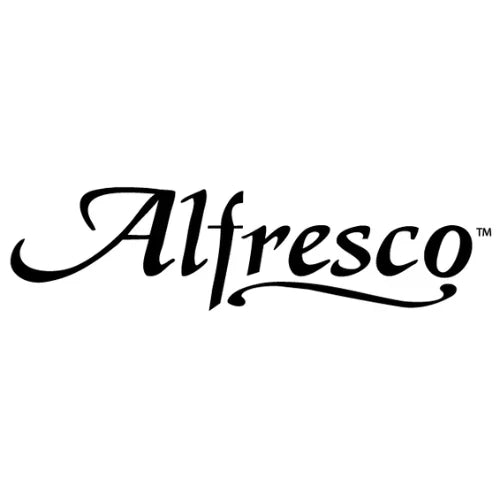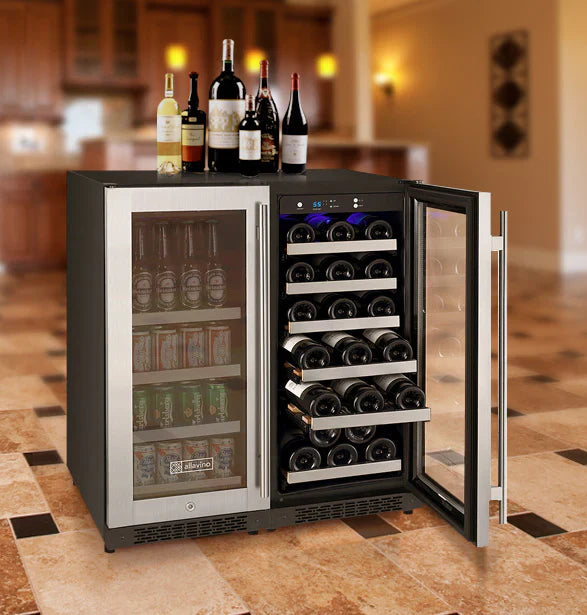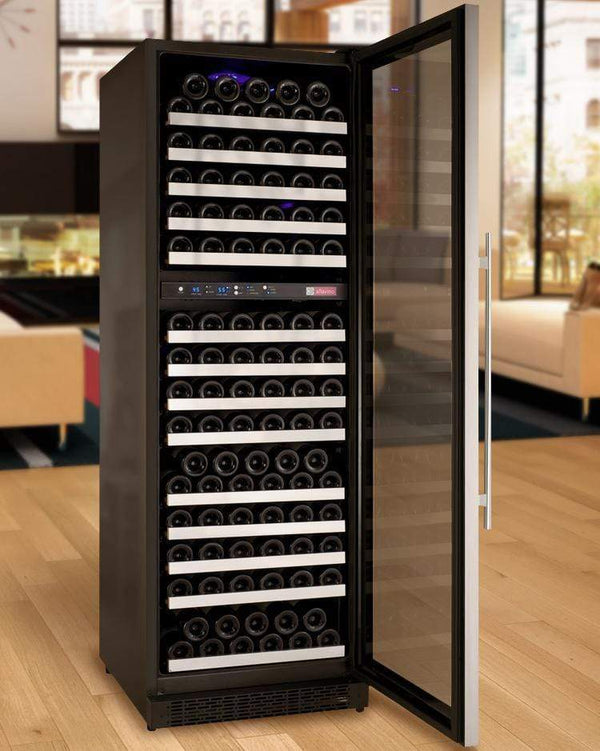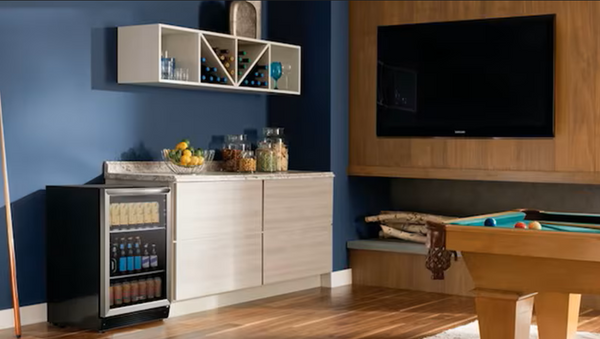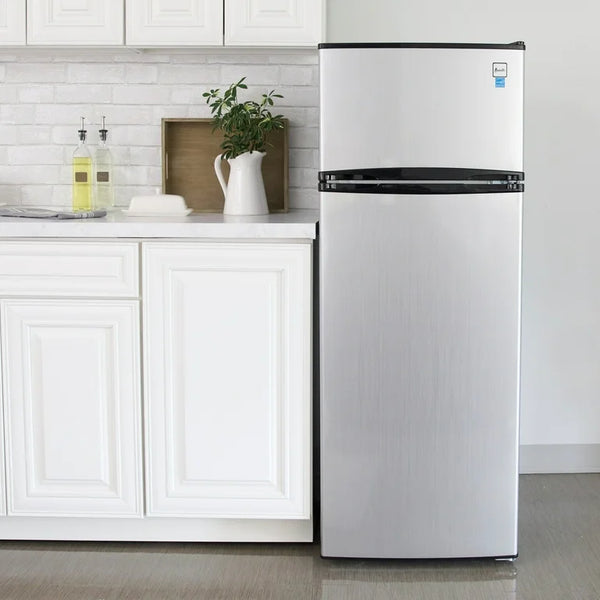Designing a Wine Cellar?
Let’s get it right.
Our specialists review your room layout, insulation, and heat load to recommend the correct cooling system for stable temperature and reliable climate control.
Wine Cellar UV Lighting: Protecting Your Collection and Equipment
Introduction: The Importance of UV Lighting in Wine Cellar Maintenance
By Jim Hopper, Wine Cooling Expert
A wine cellar is more than a storage space—it’s a carefully maintained environment designed to preserve and enhance your wine collection. Maintaining ideal conditions goes beyond temperature and humidity. Microbial growth, such as mold and bacteria, can threaten both your wine and your cellar’s cooling equipment. UV lighting has emerged as an effective solution to keep your wine cellar clean, efficient, and odor-free, while also supporting the longevity of your investment.
For a deeper dive into designing and maintaining the perfect wine cellar environment, see our Ultimate Guide to Wine Cellar Cooling Systems.
Understanding UV Lighting

What is UV Light?
Ultraviolet (UV) light is a type of electromagnetic radiation invisible to the naked eye, sitting just beyond the violet end of the visible light spectrum. It is commonly found in sunlight and has unique properties that make it useful for sterilization.
Types of UV Light: UV-A, UV-B, UV-C
- UV-A: The longest wavelength; penetrates deeply but is less energetic.
- UV-B: Medium wavelength; responsible for sunburns and some sterilization.
- UV-C: Shortest wavelength and most energetic, known for its germicidal properties.
Why UV-C is Used for Sterilization
UV-C light, particularly at a wavelength of 254 nanometers, is highly effective at destroying the DNA and RNA of microorganisms. This prevents bacteria, viruses, mold, and fungi from reproducing and spreading, making UV-C ideal for sterilization in wine cellars and other sensitive environments.
Challenges in Wine Cellar Environments

Humidity and Temperature: A Double-Edged Sword
Wine cellars are typically kept at 50–70% humidity and a cool temperature to ensure corks stay moist and wine ages gracefully. However, these same conditions also create an ideal breeding ground for mold, fungi, and bacteria.
For more on maintaining the perfect environment, see Ideal Wine Cellar Temperature and Wine Cellar Humidity.
Common Issues: Mold, Bacteria, Fungi, and Odors
Without proper safeguards, microbial growth can:
- Cause musty odors that permeate the cellar
- Reduce air quality and increase allergens
- Clog cooling system components, decreasing efficiency
- Lead to costly maintenance or repairs
Impact on Wine, Equipment, and Air Quality
While mold on bottles may not harm the wine inside, it can impact the appearance and value of your collection. More importantly, microbial buildup in cooling units can lead to system malfunctions, airflow restrictions, and inconsistent cellar conditions.
How UV Lighting Works in Wine Cellar Cooling Units
Placement and Integration of UV-C Lamps
UV-C lamps are typically installed inside the cooling unit, near areas where moisture accumulates and microbes thrive, such as evaporator coils and drainage components. This strategic placement ensures maximum exposure to circulating air and internal surfaces.
Key Components Protected by UV-C Lighting:
- Evaporator coils: Prevents microbial buildup that can reduce airflow and efficiency.
- Drain pans and drain lines: Inhibits mold and bacteria that cause clogs and water overflow.
- Blower and fan assemblies: Reduces allergens and ensures optimal airflow.
- Condensate pumps: Prevents excess microbial growth that can impede drainage.
This targeted protection helps keep your entire cooling system running smoothly and reduces the risk of maintenance issues.
Mechanism: How UV-C Disrupts Microorganisms
As air flows through the cooling system, it passes by the UV-C lamp. The UV-C light damages the genetic material of microorganisms, rendering them unable to reproduce or cause harm. This process happens continuously as long as the cooling system is running. In most systems, the UV-C lamp operates only when the cooling unit’s compressor is active, which maximizes effectiveness and conserves energy.
The Role of UV Lighting in Air Purification and System Cleanliness
By neutralizing microbes before they can colonize, UV lighting:
- Keeps coils, drain pans, and blowers clean
- Prevents clogs and water buildup
- Reduces the need for chemical cleaning and manual maintenance
- Removes airborne allergens and volatile organic compounds (VOCs), improving air quality for both your wine and anyone entering the cellar
Benefits of UV Lighting in Wine Cellars

-
Prevents Mold and Bacterial Growth:
UV-C light directly targets and neutralizes mold, bacteria, and fungi before they can take hold in your cooling system. This also helps prevent clogs in drain lines and pans, reducing the risk of water damage. -
Improves Air Quality and Reduces Allergens:
By eliminating microorganisms and airborne allergens, UV lighting creates a cleaner environment for both your wine and anyone entering the cellar. It also reduces volatile organic compounds (VOCs), which can contribute to odors and affect wine storage conditions. -
Eliminates Odors:
Microbial growth is a common source of musty or unpleasant odors. UV lighting helps keep your cellar smelling fresh by neutralizing odor-causing bacteria and VOCs. -
Enhances Cooling Efficiency and Reduces Maintenance Needs:
A clean system runs more efficiently, uses less energy, and experiences fewer breakdowns. Some studies suggest energy savings of up to 35% due to improved airflow and reduced organic buildup. -
Extends Lifespan of Cooling Equipment:
By preventing biological buildup, UV lighting reduces wear and tear on critical components, helping your equipment last longer and lowering long-term maintenance costs.
Safety Considerations
Is UV Lighting Safe for Wine?
Yes. The UV-C lamp is housed entirely within the cooling unit, so the wine bottles and their contents are never exposed to UV-C light. This means your wine is safe from any potential UV damage.
Is There Any Risk to People?
No. As long as the system is properly installed, the UV-C light is fully contained and cannot escape into the cellar, ensuring safety for anyone accessing the space.
How Modern Systems Ensure Safe Operation
Modern UV lighting upgrades are designed with safety in mind. They are securely mounted inside the cooling unit and often include automatic shut-off features when the unit is serviced.
Installation and Maintenance
Compatible Cooling Units and Upgrade Options
Not all cooling units come with UV lighting by default, but many modern systems offer UV upgrades or add-ons. To add UV protection to your cellar, explore the UV Lighting System Upgrade for WhisperKOOL units—a popular option for reliable, built-in air purification.
If you’re planning a new build or upgrade, see our Wine Cellar Cooling Unit Installation Guide and Wine Cellar Cooling Unit Sizing for step-by-step help.
Basic Installation Process
A UV-C lamp is mounted within the evaporator compartment, focusing on high-moisture areas. Installation is typically straightforward but should be performed by a qualified technician to ensure safety and effectiveness.
Routine Maintenance: Bulb Replacement and Inspections
UV-C bulbs lose effectiveness over time. For continued protection, remember to replace your UV-C Lighting System Bulb annually or as recommended by your manufacturer. Regular inspections and annual maintenance are essential for optimal performance.
Conclusion

UV lighting is a powerful tool for maintaining a pristine wine cellar environment. By preventing microbial growth, improving air quality, reducing allergens and VOCs, and extending the life of your cooling equipment, UV-C technology helps ensure your wine ages under the best possible conditions. For collectors who value both their wine and their peace of mind, UV lighting is a smart and effective upgrade.
If you’re considering a new system or upgrade, check out our recommendations for the Best Wine Cellar Cooling Units and learn about Ductless Split Wine Cooling Systems to find the right fit for your space.
Additional Resources
For more information on wine cellar technology, maintenance, and UV lighting solutions, always consult your cooling system manufacturer or speak with a wine cellar specialist. Refer to your manufacturer’s installation and maintenance guides for step-by-step instructions and safety tips.
Need Expert Advice or a UV Lighting Upgrade?
For personalized recommendations, installation guidance, or to explore the latest in wine cellar UV lighting technology, contact our team:
Wine Coolers Empire
Call Us: 1-888-407-7770
Email Us: support@winecoolersempire.com
📚 Frequently Asked Questions (FAQs)
Does UV lighting affect the wine itself?
How often should bulbs be replaced?
Is UV lighting necessary for every wine cellar?
What are the costs involved?
How do I know if my cooling unit is compatible with UV lighting?

Designing or Upgrading a Wine Cellar?
We got you! Here at Wine Coolers Empire, we will guide you in building your dream wine cellar.



